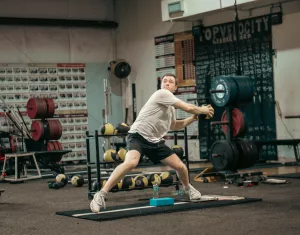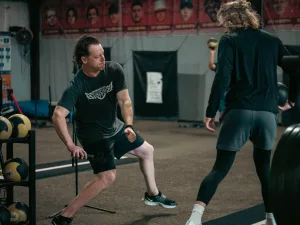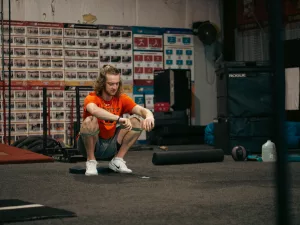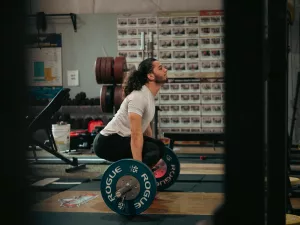Baseball players must be able to throw hard and precisely to be successful on the field, and infielders in particular must have these skills. The speed at which an infielder can throw the ball is known as infield velocity, and it is a crucial metric for assessing a player's defensive skills. This metric is used by coaches and scouts to evaluate a player's ability and ascertain where they belong in a team's defensive lineup.
This article will examine what a decent infield velocity is, how it is calculated, and the variables that affect it. We will also discuss how coaches can tailor their players' defensive strategies based on their individual strengths and flaws, as well as how infielders can increase their velocity through training and technique. Understanding infield velocity is crucial for success on the field, whether you're a sports fan or a coach trying to improve the performance of your squad.
The importance of infield velocity in baseball
 Baseball's infield velocity is crucial because it directly affects a player's protective skills. In order to get the out when a ground ball is hit toward an infielder, they must make a hard and precise throw to the proper base. Getting the out or enabling the runner to make it to base safely may depend on how quickly an infielder can make this throw.
Baseball's infield velocity is crucial because it directly affects a player's protective skills. In order to get the out when a ground ball is hit toward an infielder, they must make a hard and precise throw to the proper base. Getting the out or enabling the runner to make it to base safely may depend on how quickly an infielder can make this throw.
Infield velocity can also have an effect on a team's total performance. Due to having to take fewer risks, a player with a high infield velocity can make it harder for the opposition team to make progress on the bases. This could significantly benefit the squad that has the high-velocity player.
In addition, coaches and scouts must consider infield velocity when assessing players. It is frequently used to assess a player's ability and place within the defensive lineup of a team. Infielders with high velocities are frequently given priority by coaches because they can enable a more aggressive defensive approach, which puts pressure on the opposition team to commit errors.
In conclusion, infield velocity is an important aspect of baseball that affects a player's defensive skills, a team's overall success, and a player's possibility for development. To succeed on the field, both coaches and players must comprehend this metric and strive to improve it.
Infield velocity from youth to the pros
 Baseball players at all levels, from little league to professionals, depend on their infield velocity. Depending on the level of play and the position performed, the average infield velocity changes.
Baseball players at all levels, from little league to professionals, depend on their infield velocity. Depending on the level of play and the position performed, the average infield velocity changes.
Players in youth baseball may reach infield speeds of 50 to 60 mph. On the other hand, high school players usually have an average infield velocity of 70 to 80 mph. College athletes' infield velocities can range from 80 to 90 mph on average, with some exceptional athletes achieving speeds of over 100 mph.
The highest average infield velocities, however, are usually found among professional athletes. In Major League Baseball (MLB), infielders can reach speeds of up to 100 mph, with an average speed of 85 to 95 mph.
It's important to remember that the average infield velocity differs depending on the position performed. For instance, third basemen and shortstops frequently travel at speeds that are greater than those of second basemen and first basemen.
In conclusion, infield velocity changes according to the intensity of the game and the position played. Professional players generally have the highest velocities, with some exceptional players throwing at speeds of over 100 mph, while youth players may have lesser velocities. Players and coaches can evaluate their own skills and make progress toward increasing their infield velocity by being aware of the average velocities of various levels of play.
Factors that influence infield throwing velocity
 Mechanics, total body strength, feet work, and field conditions are just a few of the variables that can affect an infielder's throwing velocity.
Mechanics, total body strength, feet work, and field conditions are just a few of the variables that can affect an infielder's throwing velocity.
In order to increase throwing velocity, proper practice is essential. To generate power and throw accurately, infielders must use their complete body, beginning with their footwork and body positioning. Without using proper technique, an infielder might not be able to exert the required force to hurl the ball with the greatest possible velocity.
Another important element in deciding an infielder's throwing velocity is the kinetic chain. Players with more powerful anatomies are able to hurl the ball faster and with more force. Many athletes practice specific weightlifting and fitness drills to increase this power.
Additionally, a player's field location can affect the velocity of their throws. First base and other bases-closer positions for infielders may not call for as much speed as shortstop or third base, which are positions farther from the bases. An infielder's throwing velocity can also be impacted by throwing from various fields of play, such as off balance.
Last but not least, infield velocity can be impacted by field circumstances. The ball can move more quickly when playing on a field with shorter grass, but it can also move more slowly and impact a player's stability and footing when it is wet.
Improving infield velocity through training and technique
 The 2X Velocity Program is a specialized training regimen made to assist baseball players, particularly position players, increase their throwing velocity. To improve arm speed and general efficiency, the program combines strength and conditioning exercises with advanced throwing techniques.
The 2X Velocity Program is a specialized training regimen made to assist baseball players, particularly position players, increase their throwing velocity. To improve arm speed and general efficiency, the program combines strength and conditioning exercises with advanced throwing techniques.
The use of 2lb medicine balls during exercise is one of the 2X Velocity Program's fundamental ideas. Throwing medicine balls that are 2lbs while using this method can help build the kinetic chain and enhance throwing mechanics. Drills that emphasize correct body positioning and footwork are also included in the program to aid players in producing more power and maximizing their velocity.
Video analysis is yet another crucial component of the 2X Velocity Program. In order to evaluate a player's throwing technique and pinpoint areas that require development, You can send your video in for analysis. The player's training regimen can then be modified using the input in order to create a personalized plan that will help them increase their velocity.
The 2X Velocity Program provides a thorough method for enhancing infield velocity through technique and exercise. The program is made to assist athletes at all stages of competition, from amateur to professional, in reaching their full potential. Players can work to improve their arm strength, accuracy, and general performance on the field by incorporating advanced training methods like weighted ball training and video analysis.
2X Velocity Program for throwing Velocity
Consider checking into specialized training programs like the 2X Velocity Program if you want to increase your infield velocity. Through specific exercises, lifts, and drills created to improve the kinetic chain, mechanics, and strength/power, these programs provide a comprehensive strategy to enhancing throwing velocity. You can boost your on-field performance and acquire a competitive edge in the sport by taking steps to increase your infield velocity.




